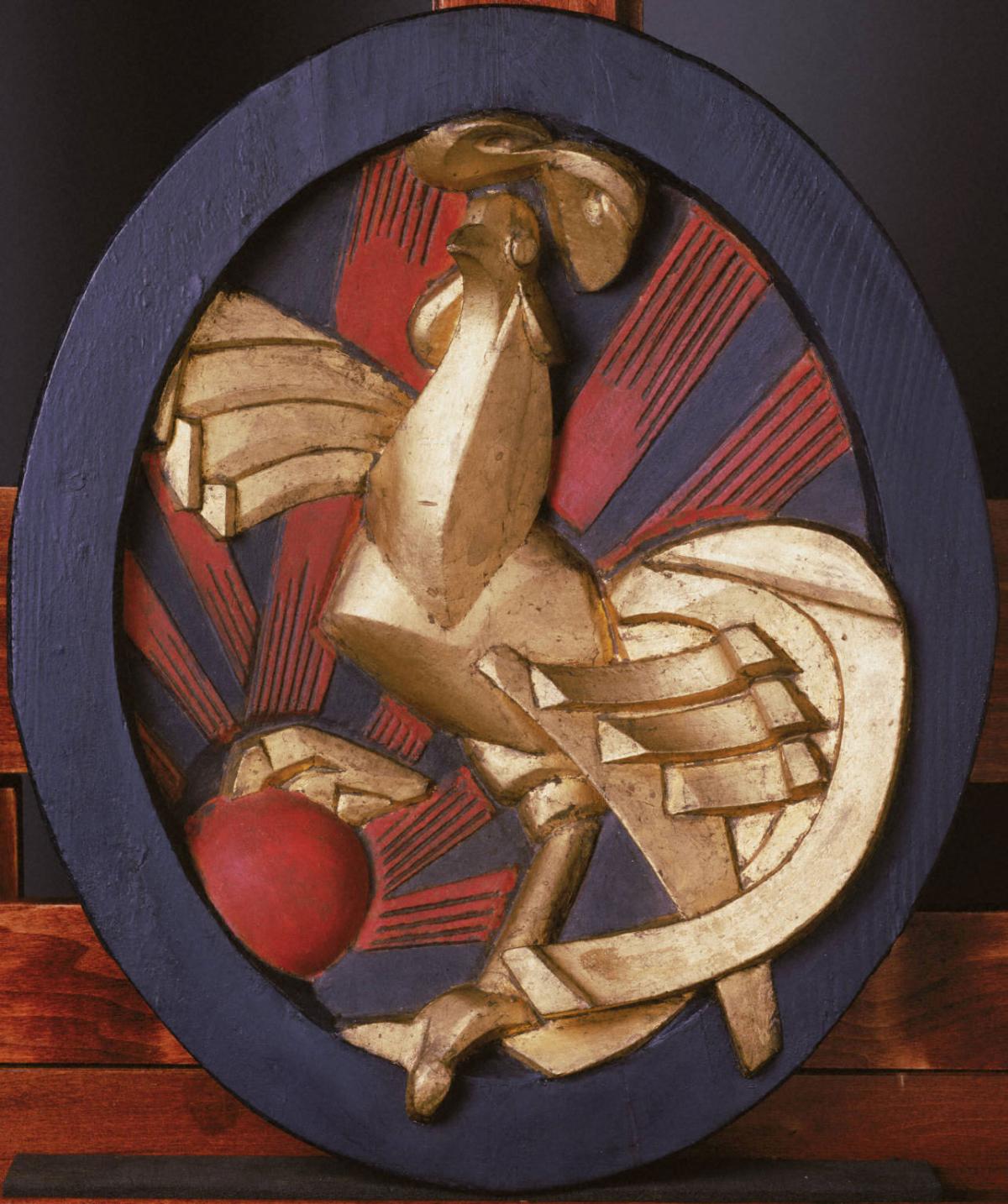Gallic Cock
Raymond Duchamp-Villon ( 1916 )

Gallic Cock is one of the few sculptures created by Raymond Duchamp-Villon during World War I. He made it while convalescing from typhoid fever at Mourmelon, where he was asked to design a portable theater for entertaining the troops at the front. Gallic Cock was conceived as an architectural medallion to be prominently placed within the scheme of the design. Derived from emblematic tradition, the rooster has the attribute of the rising sun and is the traditional heraldic symbol of France. Ironically, the patriotism expressed in this symbolism was itself what had prompted Duchamp-Villon’s voluntary enlistment in the military, which ultimately cost him his life and fulfillment as a sculptor.
In contrast to some of these earlier medallions, which in their extreme geometric reduction approached pure abstraction, Gallic Cock is quite legible. We see before us a rooster of regal bearing, his wings partially spread like a mantle. One talon rests on the orb of the sun, which radiates its golden rays behind him, creating a striated and textured field that visually complements the bird’s raised geometric form. Duchamp-Villon deliberately minimized the degree of abstraction in the interest of his army audience, most of whom were not familiar with recent avant-garde developments. He did not wish his work to misunderstood.
Although there are several versions of Gallic Cock in plaster and bronze, the work now in The Phillips Collection is the original plaster model, painted and framed with a wooden support. In 1917 it was sent to New York, where it was subsequently purchased by John Quinn, a collector whose keen and sustained interest in Duchamp-Villon helped to enlarge the artist’s reputation in the United States. Upon receiving the news of Duchamp-Villon’s death in October 1918, Quinn immediately commissioned three bronze casts of the plaster medallion as a memorial. In the interest of preserving the artist’s original vision, Quinn had them painted in exact duplication of the plaster.